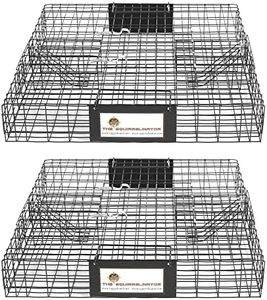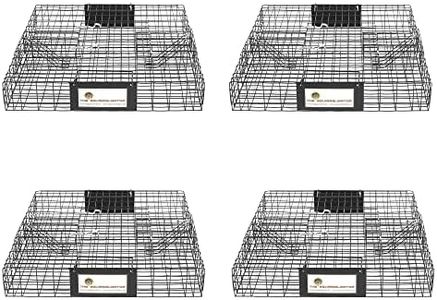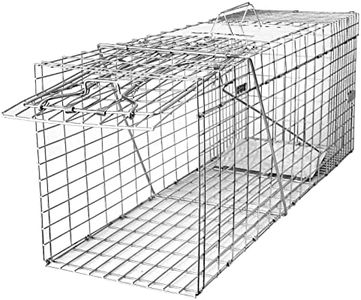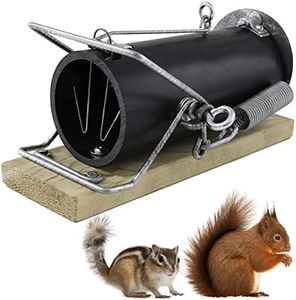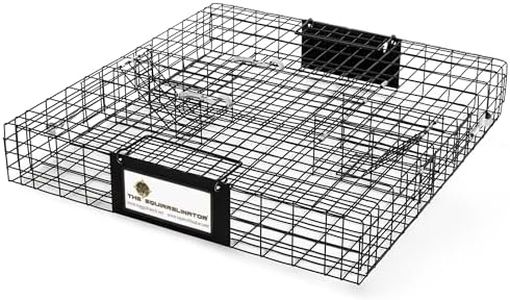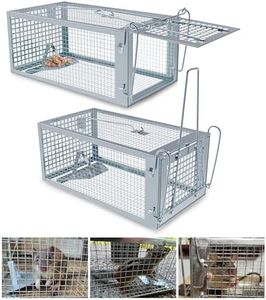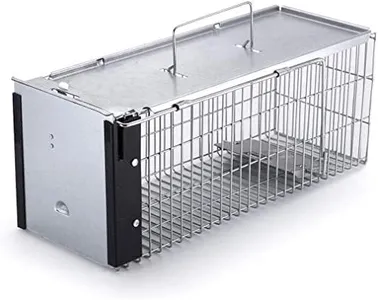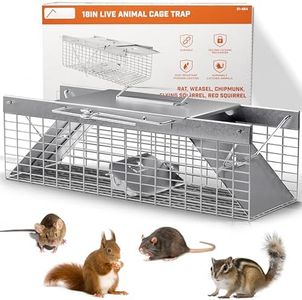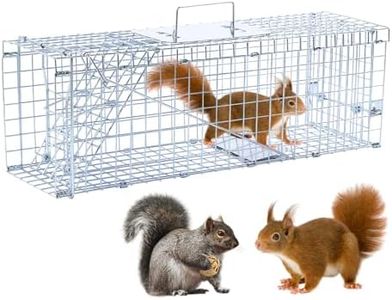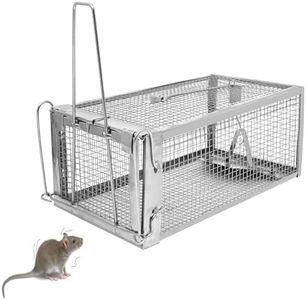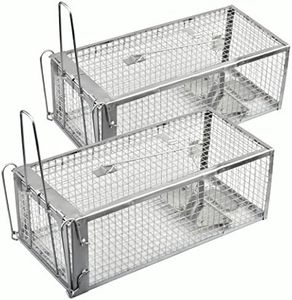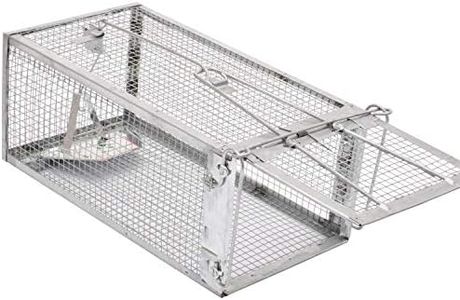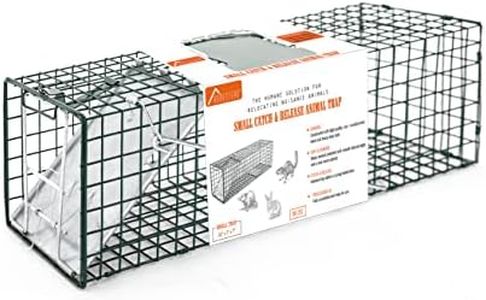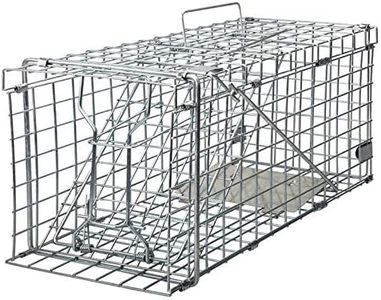10 Best Squirrel Traps 2025 in the United States
Our technology thoroughly searches through the online shopping world, reviewing hundreds of sites. We then process and analyze this information, updating in real-time to bring you the latest top-rated products. This way, you always get the best and most current options available.

Our Top Picks
Winner
Rugged Ranch 4 Pack Squirrel Traps, Catch & Release Cage, Squirrelinator
Most important from
7270 reviews
The Rugged Ranch 4 Pack Squirrel Traps are cage-style devices designed to safely and humanely catch small mammals like squirrels and chipmunks. Constructed from durable metal wire with oak components, these traps are sturdy enough to hold animals securely without damage or escape. Featuring a two-door system and a relatively large size, they increase the chances of capturing animals by allowing entry from multiple sides. A top-open lid facilitates easy and quick release, aiding responsible relocation efforts.
These traps offer versatility in placement and can be baited with various foods to attract squirrels. Since they rely on animals entering voluntarily rather than using electric mechanisms, they may require time and patience. While the metal frame is strong, the weight and size might be somewhat bulky for users who need to move them frequently.
This product is well suited for individuals seeking a humane catch-and-release option without complicated technology. It may not be the best choice if immediate trapping results or a more compact design are priorities, but its solid construction and ease of releasing animals make it a practical solution for managing small wildlife around your property.
Most important from
7270 reviews
SZHLUX 32" Live Animal Cage Trap, Heavy Duty Folding Raccoon Traps, Humane Cat Trap for Stray Cats, Raccoons, Squirrel, Skunk, Mole, Groundhog, Armadillo, Rabbit, Catch and Release
Most important from
2149 reviews
The SZHLUX 32" Live Animal Cage Trap is designed for capturing small animals including squirrels, raccoons, stray cats, and more. One of its key strengths is the high-quality material—constructed from low carbon steel wire with medium frequency welding, making it durable and resistant to weather and rust. The foldable design enhances ease of use, allowing for quick setup without the need for tools, and making it convenient to transport in a car trunk.
The humane features of the trap include smoothed internal edges to prevent injury to the captured animal and a secure oblong support frame. Additionally, safety is a priority with the top cover guard board preventing accidental injuries and an internal connecting rod mechanism ensuring the animal doesn't mistakenly trigger the release mechanism. Bait compatibility is straightforward as any standard bait can be used to lure the animal into the trap.
Its weight (8.93 pounds) and dimensions (32"L x 10"W x 12"H) make it manageable for placement flexibility around your yard or property. However, while it is suitable for a variety of animals, some customers may find it slightly bulky at 38.2 inches when packaged. This trap is ideal for those looking to humanely capture and release small animals without needing electric capabilities.
Most important from
2149 reviews
Squirrel Traps Outdoor - Squirrel Traps - Ouell Traps - Trap for Squirrels (Small)
Most important from
2182 reviews
The Ouell Squirrel Trap is designed specifically for effectively catching gray squirrels, making it a solid choice for homeowners and professionals dealing with unwanted wildlife. Its main strength lies in its robust construction, featuring a galvanized metal frame and heavy-duty cedar bottom, ensuring durability for outdoor use in various weather conditions. This trap is built to last, which can be a cost-effective solution in the long run. Moreover, it boasts a no-contact animal removal lever that promotes a humane approach to pest control, aligning with the growing preference for humane traps among users.
In terms of ease of use, the trap's installation process is fairly straightforward, requiring just a pull of a lever to arm it. This can be a significant advantage for those unfamiliar with complex trap mechanisms. It's also versatile, as it can use any bait, allowing for flexibility depending on what is available or preferred.
However, it’s worth noting a few drawbacks. While it’s designed for gray squirrels, its effectiveness on smaller species may be limited. The size (11”L x 5”W x 6”H) might not be suitable for all environments, particularly smaller or more confined spaces where placement flexibility could be an issue.
Most important from
2182 reviews
Buying Guide for the Best Squirrel Traps
Choosing the right squirrel trap can be a bit overwhelming, but with the right knowledge, you can find the perfect one for your needs. The key is to understand the different specifications and how they align with your specific situation. Here are some important factors to consider when selecting a squirrel trap.FAQ
Most Popular Categories Right Now
